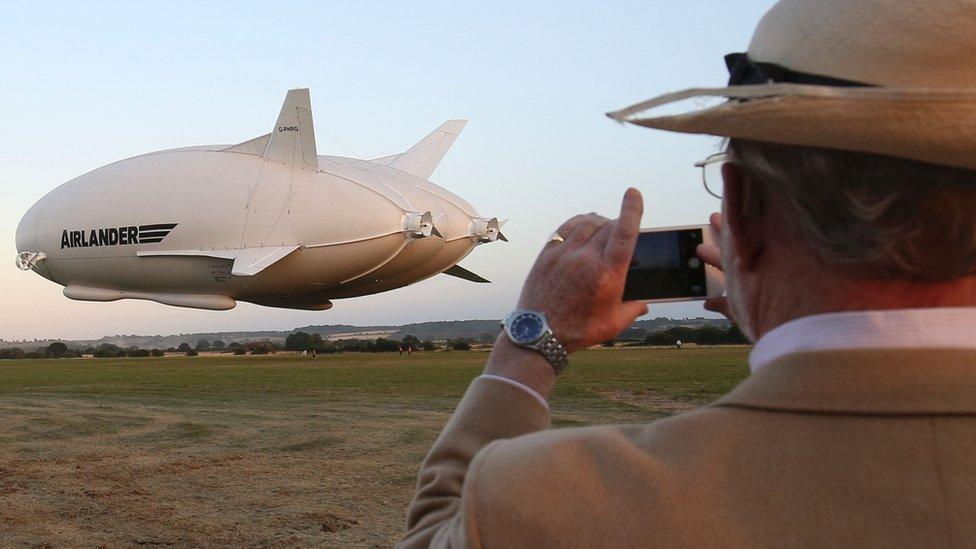Airlander 10: £1m grant for craft to go 'all-electric'
- Published

Airlander 10 takes to the skies during its fourth test flight in June 2017
A grant of more than £1m has been awarded to make the world's longest aircraft, Airlander 10, all-electric.
Bedford firm Hybrid Air Vehicles (HAV), which is behind the combined plane and airship, says its wants to reduce its carbon footprint and create "zero-carbon aviation".
The money from the UK Aerospace Research and Technology Programme, may not "be enough" an aviation consultant said.
The work could take several years.
The project, named E-HAV1, will develop a prototype 500kW electric propulsor to replace its fuel-burning forward engines, HAV said.
It would take "several years" to develop the new engine and bring it to market, an HAV spokeswoman said.
The prototype £32m Airlander 10 was formally retired after its collapse in 2017, following six successful test flights.
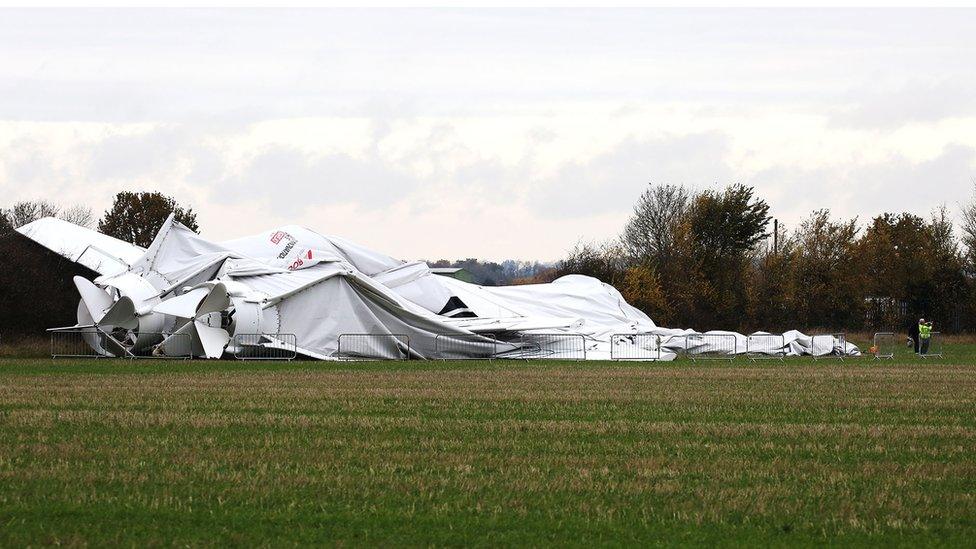
The Airlander collapsed on 18 November 2017
Work is now under way to develop the next Airlander 10 and full production due to start soon, HAV confirmed.
This version of the craft uses a combination of buoyant lift from helium, aerodynamic lift and vectored thrust.
HAV chief executive Stephen McGlennan said reducing carbon footprints was "one of the biggest challenges facing aviation".
"This project will move us closer to our goal of zero-carbon aviation," he said.
Tony Dixon, an aviation consultant said: "We will have to see if they can prove [the new technology] can work, as its engines are already low in emissions, but the lower the better.
"I am not sure £1m will be enough."
HAV, Collins Aerospace and the University of Nottingham have been jointly awarded the grant.
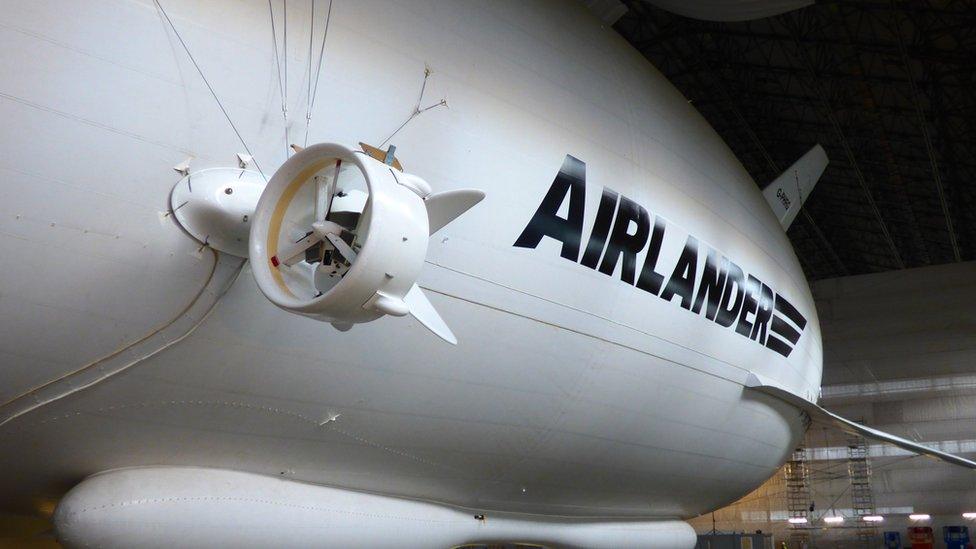
Airlander 10 had four engines, including one on each side
- Attribution
- Published22 April 2019

- Published19 April 2019
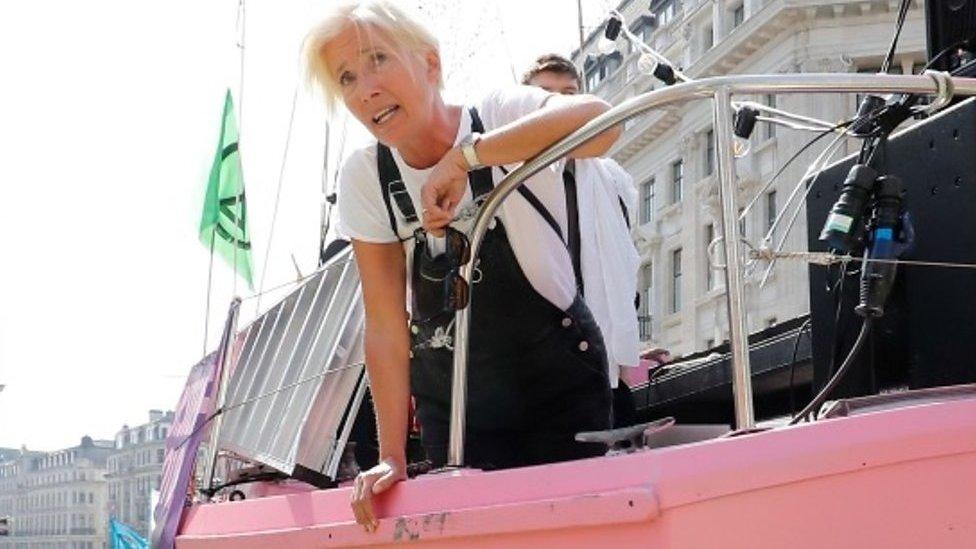
- Published13 January 2019
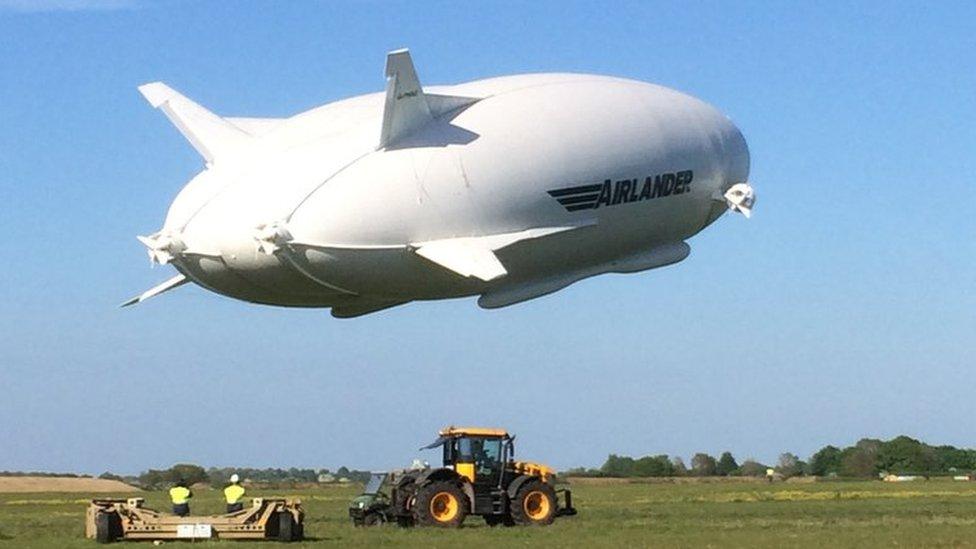
- Published18 July 2018
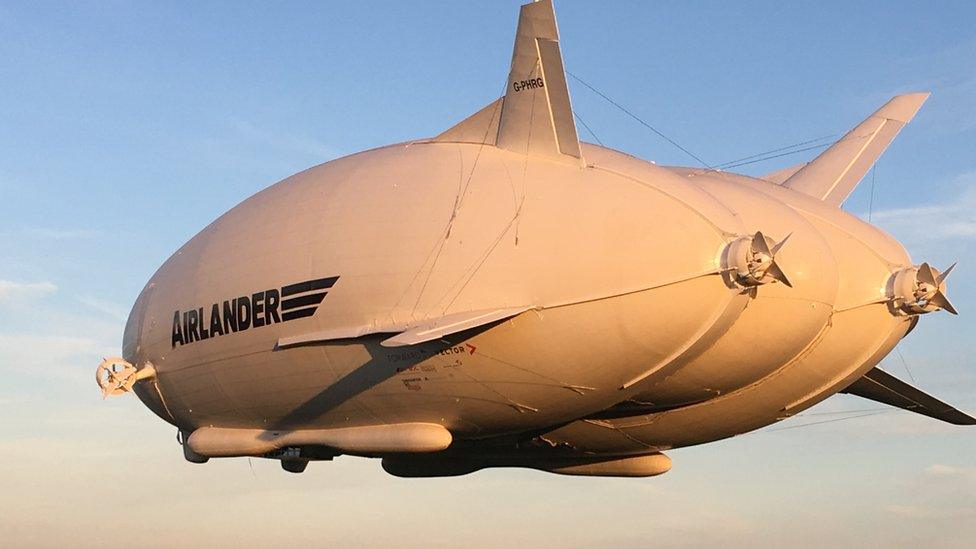
- Published13 June 2018
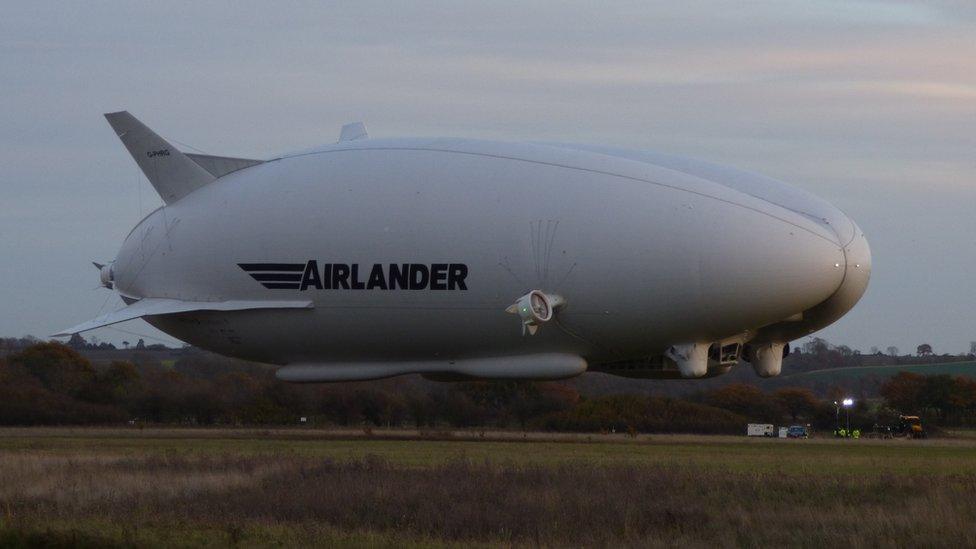
- Published18 November 2017
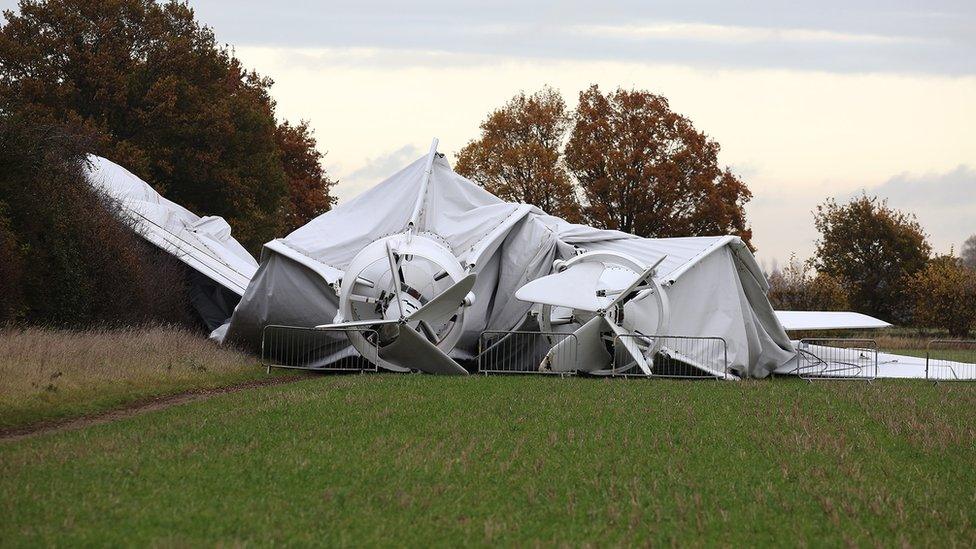
- Published17 August 2016
